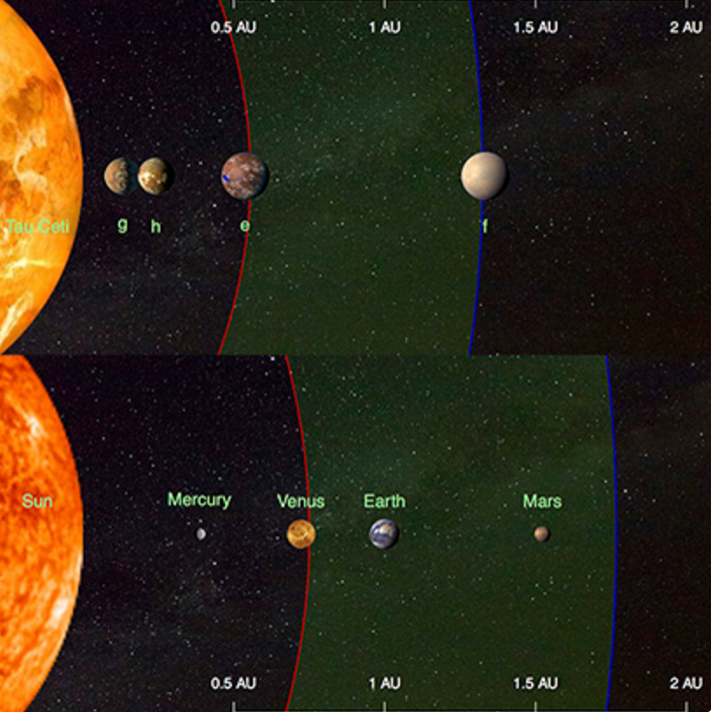Tau Ceti: Our new home planet could be just 12 light years away
There are two planets in Tau Ceti's habitable zone.

Scientists have discovered not one but two potentially habitable 'super-Earths' just 12 light years away.
The planets are in the Goldilocks 'habitable zone' around Tau Ceti, a star very like our own sun. The large, rocky planets have been identified as good candidates for colonising another solar system in the future. The planets are about 1.7 times the size of Earth, and they are present in the region around the star that is at the right temperature for liquid water to exist.
The planets were detected by observing a regular 'wobble' in Tau Ceti's motion. Using incredibly sensitive techniques, scientists managed to measure variations as small as 30 centimetres per second in the star's movement.
This wobble indicated the presence of exoplanets, and could be used to work out the size and position of the star's satellites. The results are published in a study in the Astrophysical Journal.
"We are now finally crossing a threshold where, through very sophisticated modelling of large combined data sets from multiple independent observers, we can disentangle the noise due to stellar surface activity from the very tiny signals generated by the gravitational tugs from Earth-sized orbiting planets," said study author Steven Vogt of the University of California, Santa Cruz, said in a statement.
Tau Ceti has captured imaginations for future interstellar missions for some time. It is referenced in science fiction series such as Star Trek. But scientists have debated whether it really would make a good home for humans because of its unusual chemical composition. Previous research has found that other planets in the Tau Ceti system have worryingly high magnesium to silicon ratio, which might not be conducive to life.
But even so, discoveries such as this mean that astrophysicists can build up more detailed pictures of exoplanets to see which would be the best to focus on for future human colonisation.
"We're getting tantalisingly close to observing the correct limits required for detecting Earth-like planets," said study author Fabo Feng, from the University of Hertfordshire.
"Our detection of such weak wobbles is a milestone in the search for Earth analogues and the understanding of the Earth's habitability through comparison with these."
© Copyright IBTimes 2025. All rights reserved.





















